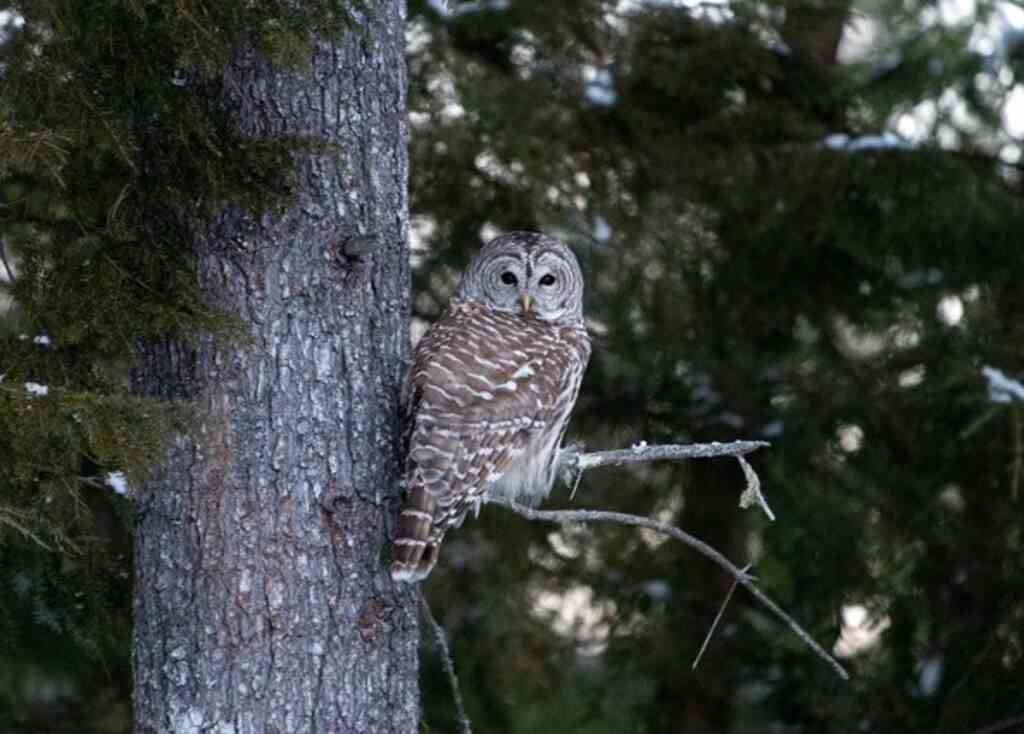Do owls eat berries? Short answer: yes! But why would a bird of prey bother with fruit? It turns out that owls are more than just hunters; they’re also opportunistic eaters.
In this article, we’ll explore the surprising ways that owls incorporate berries into their diets and how it can benefit both the bird and the environment. Get ready to see these nocturnal creatures in a whole new light!
Table of Contents
- 1 The Fascinating Eating Habits of Owls
- 2 Types of Berries Eaten by Owls
- 3 Hunting Techniques Used by Owls
- 4 Time and Seasonality of Berry Hunting
- 5 What Happens When Berries Run Out?
- 6 The Benefits of Eating Berries for Owls
- 7 The Risks of Eating Berries for Owls
- 8 Benefits and Risks of Eating Berries for Owls
- 9 Conclusion
- 10 FAQs: Do Owls Eat Berries?
- 10.1 Do owls eat berries?
- 10.2 What kind of berries do owls eat?
- 10.3 Do all species of owls eat berries?
- 10.4 Why do owls eat berries?
- 10.5 Can all owl species eat berries?
- 10.6 How do owls benefit from eating berries?
- 10.7 Do owls only eat berries when they can’t find prey?
- 10.8 Can eating too many berries be harmful to owls?
- 11 Author
The Fascinating Eating Habits of Owls
Owls are a well-known nocturnal bird of prey that can be found all over the world, except for Antarctica.
These majestic birds have captured the attention and imagination of people for centuries with their distinctive hooting sounds, sharp talons and impressive hunting abilities.
Their diet is incredibly diverse, ranging from small insects to large mammals. But do owls eat berries?
Definition of Owls
Before exploring whether owls eat berries or not, it’s important to know what exactly owls are. Owls belong to the order Strigiformes which includes more than 200 species worldwide.
They are characterized by their large heads, forward-facing eyes and sharp talons that allow them to capture prey with incredible accuracy.
General Overview of Owl’s Diet
The owl’s diet varies depending on the season, location and species. Most owls are carnivorous and hunt for small mammals such as rodents, rabbits and bats.
Some larger species like the Great Horned Owl have been known to attack larger prey like skunks or even other birds of prey such as falcons or eagles.
However, some owl species have been observed eating fruits and berries in addition to their usual meat-based diet.
Focus on Berries as a Food Source for Owls
Berries can provide an excellent source of nutrients for many animals, including birds like owls. Many varieties offer a high energy yield, making them an attractive option for animals looking to supplement their diets during times when other food sources may be scarce or hard to find.
While there haven’t been any comprehensive studies done specifically on this topic, there is anecdotal evidence that suggests some owl species do indeed consume berries as part of their regular diet.
It’s important to note that even though some owl species do eat berries, it is not a primary food source or a large percentage of their overall diet. It is often viewed as a supplement to the meat-based diet they typically consume.
In the following sections, we’ll explore what types of berries owls eat, how they hunt for them and the benefits and risks associated with consuming this type of food.
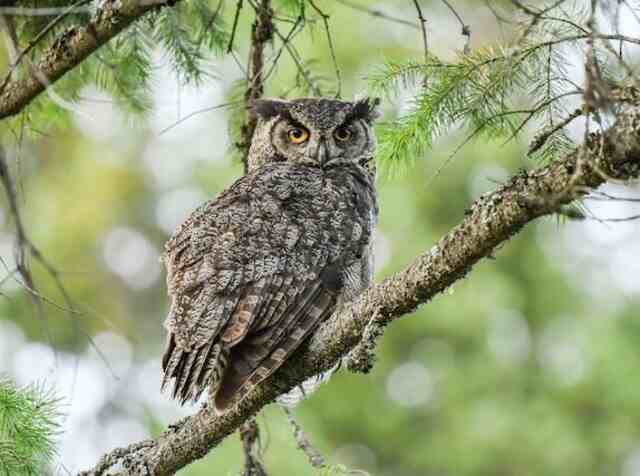
Types of Berries Eaten by Owls
The Broad Diversity of Berries Consumed by Owls
Despite their meat-based diet, owls also consume a variety of fruits and berries. The degree to which an owl’s diet includes fruits and berries depends on the species, region, time of year, and availability.
Species that live in areas where year-round fruiting trees are present generally consume more fruit than those in areas without them.
The particular types of berries that owls eat vary depending on the region they inhabit; however, some common types include blackberries, blueberries, strawberries, raspberries, elderberries and mulberries.
These fruits are usually high in sugar and provide a quick source of energy to these nocturnal avians.
The Nutritional Value of Berries to Owls
Berries are rich in nutrients such as vitamins C and K, fiber and anti-oxidants which offer many health benefits for these birds.
In the wild, owls may face nutritional challenges when their prey is scarce or not nutritionally balanced, since they require a mix of macro- and micronutrients for survival.
Berries provide an alternative source to supplement their diets with essential nutrients.
In addition to nutrients like vitamins C and K contained in various berries consumed by owls; elderberry contains anthocyanins which act as antioxidants, while blackberry contains polyphenols which have antiviral properties that can boost the immune system.
Berries also contain minerals like potassium, which plays an important role in muscle function regulation.
Potassium is particularly important for birds like the short-eared owl who can travel long distances during migrations since it helps maintain electrolyte balance required for proper muscle function.
Berries as Part of Balanced Diets
Despite being highly nutritious foods for owls; berries alone cannot provide all the nutrients needed for a balanced diet. As such, owls that feed mainly on fruits and berries may need to supplement their diets with other food sources.
Berries are most often consumed as snacks or treats between meals, and while they are not a primary source of food for owls, they still play an important role in the birds’ overall health.
A diet consisting of solely berries may also cause digestive problems for owls; therefore, it is best to provide a balance between berries and meats in an owl’s diet.
This balance will ensure that owls can enjoy all the benefits of both meat and berries while maintaining optimal health.
Factors Influencing Berry Consumption
The amount of fruit and berries consumed by owls varies greatly depending on a number of factors including habitat, seasonality, availability, competition with other animals.
For instance, berry consumption tends to be high in winter when prey is scarce, while summer months tend to see less consumption since there are more prey options available.
Furthermore, some species like the snowy owl tend to consume more fruit than others because they inhabit areas with few prey options or where prey is scarce during certain seasons.
Impacts on Owl Population Levels
Berries play an important role in the diets of many owl species around the world. However, there has been no direct evidence linking berry consumption levels to population changes among these birds.
Factors such as habitat destruction and climate change have been identified as major threats facing owl populations around the world, but further studies need to be conducted on how changes in availability of fruits and berries could impact these populations.
It’s important to understand that while berries make up only a small part of an owl’s diet, they still contribute significantly to their overall survival rates; especially during times when food is scarce.
Understanding which types of berries owls eat provides insight into their nutritional requirements and how they cope with dietary challenges.
The importance of berries in an owl’s diet cannot be overstated; they provide a valuable source of nutrients and offer a balanced diet when appropriately supplemented with other foods.
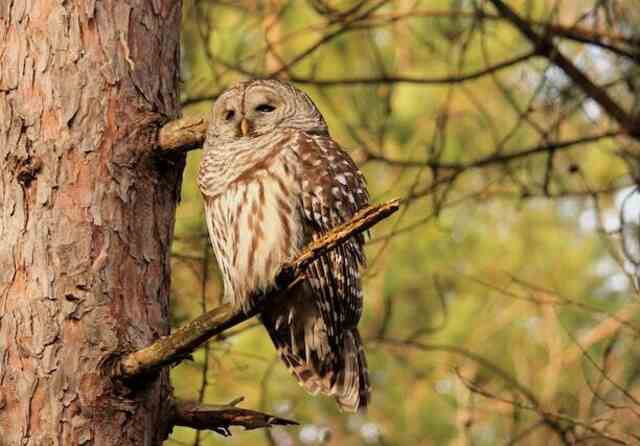
Hunting Techniques Used by Owls
Owls are renowned for their unique hunting techniques. When it comes to hunting for berries, they use a combination of sight and sound.
Owls have excellent vision, which enables them to spot fruits from afar. They also have acute hearing abilities that make it easy for them to locate ripe fruits in the dark.
With their specialized eyesight and hearing, they can hunt for berries more effectively than most other birds. When searching for berries, owls often perch on a high vantage point like trees or poles where they can observe the environment around them.
Once they spot ripe fruit-bearing trees or shrubs nearby, they swoop down from above at lightning speeds to pluck the berries off the branches.
Their wingspan is wide enough to provide lift and stability while hovering just above the plant’s canopy.
Time and Seasonality of Berry Hunting
The time of year when owls hunt for berries varies depending on climate conditions and geographical location. Generally speaking, berry-bearing plants grow best in temperate climates that experience cold winters and hot summers.
In North America, most owl species hunt for berries during late summer through fall, when these plants are plentiful in abundance.
Some species may continue to feed on fruits through winter if food sources are scarce due to seasonal changes or loss of habitat from agriculture or urban development.
In such cases, owls supplement their diet with other foods like rodents or insects until berry season returns.
What Happens When Berries Run Out?
While some owl species rely heavily on berry consumption as part of their diet, others only consume fruits occasionally as a supplement when other prey is scarce.
For example, snowy owls that live primarily in Arctic regions with long periods of darkness may eat more lemmings than berries because there aren’t many fruit-bearing trees around.
However, if an owl’s preferred berry source runs out or becomes scarce, they may be forced to search for alternative food sources.
This can result in competition with other animals sharing the same habitat, leading to potential conflict over resources and causing owls to adjust their hunting techniques accordingly.
The Benefits of Eating Berries for Owls
Berries have a lot of nutritional value that can benefit owls in numerous ways. For one, berries are rich in antioxidants that help protect the bird’s cells from damage caused by free radicals. Free radicals occur when cells break down due to environmental toxins or stressors like pollution and UV radiation.
Antioxidants help neutralize these harmful molecules before they cause significant damage. In addition to antioxidants, berries are also high in fiber, which aids digestion and promotes bowel regularity.
This can be especially beneficial for owls that consume a lot of hard-to-digest foods like fur and bones from their prey.
The high water content in fruits also helps keep the bird hydrated during dry spells or hot summer days when water sources may be scarce.
The Risks of Eating Berries for Owls
While berries offer many benefits to owls, there are also some risks associated with consuming these fruits. Some plants produce toxic berries that can cause illness or death in birds if consumed in large quantities.
Toxicity levels vary depending on the plant species and amount consumed, so it’s crucial for owls to diversify their diet and not rely solely on one type of berry.
Another risk is competition with other animals sharing the same habitat that may depend on the same fruit-bearing trees or shrubs as an essential food source.
Competition can lead to aggressive behavior between different species fighting over resources or reduced availability of fruit if too many birds consume them at once.
Overall, berry consumption is an essential aspect of an owl’s diet, but should be balanced with other foods and eaten only when ripe fruits are readily available.
By understanding how owls hunt for berries and the benefits and risks associated with this type of food source, we can appreciate these fascinating birds even more.

Benefits and Risks of Eating Berries for Owls
Benefits: Nutritional Value, Easy to Digest, and Abundance in Nature
Berries are among the primary food sources for several species of owls. These little fruits offer an array of nutritional benefits that make them an important part of an owl’s diet.
For example, some berries such as blackberries have high amounts of fiber that helps improve digestion in owls. Additionally, berries contain high levels of antioxidants, which help protect the owl’s body from harmful free radicals.
Berries also provide owls with a convenient food source. Unlike other prey items that require hunting, stalking, and killing, berries are readily available and do not need preparation before consumption.
This availability makes berries an essential source of energy for owls during winter months, when other prey species may not be as easy to find. The abundance of berries in nature is another significant benefit to owl populations.
Berries grow on plants throughout different regions, so they are widely available across various habitats, making it easier for owls to find them in their natural environment.
Risks: Toxicity, Competition with Other Animals
While berries provide many benefits to the diets of owls, there are still some risks associated with eating these little fruits.
One major risk is toxicity; some types of berries such as mistletoe or yew berry can be highly toxic to an owl’s digestive system.
Toxicity can cause a range of problems, from mild diarrhea to more severe symptoms like seizures or even death. Competition with other animals is another risk associated with feeding on berries.
Many other species also depend on berries as their primary food source during certain parts of the year, making competition for food scarce at times.
While there are risks involved in feeding on berry plants for owls such as toxicity and competition from other animals; the benefits of eating berries for owls are far greater.
Berries provide an easily accessible, nutritious, and abundant food source that is essential for owl populations to thrive.
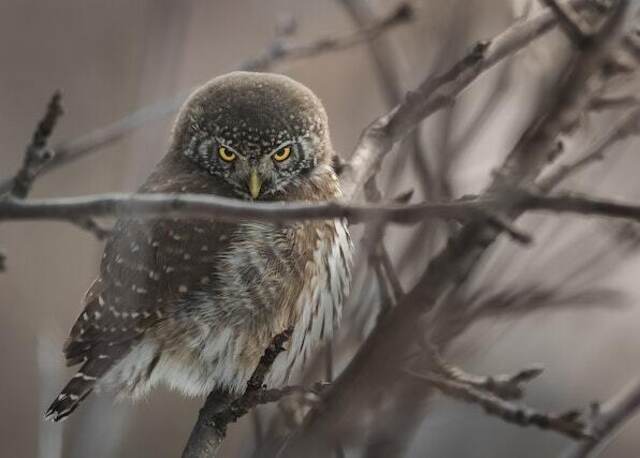
Conclusion
Recap on the Importance of Berries in an Owl’s Diet
In this article, we have explored the fascinating eating habits of owls and their consumption of berries. Berries are an essential food source for many different species of owls, providing a natural and nutritious meal that is easy to find and digest.
The nutritional value of berries cannot be overstated, as they are rich in vitamins and minerals that are vital to maintaining good health.
Owls rely heavily on their sense of sight when seeking out berries in the wild. They use this sharp vision to locate berry bushes and trees, often swooping down from above to snatch up a tasty treat.
While some types of berries can be dangerous or toxic to owls, they have adapted over time to know which ones are safe to eat.
Final Thoughts on the Fascinating Eating Habits of Owls
Overall, the eating habits of owls are marvelously complex and intriguing. These magnificent creatures have developed a unique hunting style that allows them to survive in many different environments around the world.
From forests and woodlands to deserts and tundras, owls have found ways to thrive by consuming a wide variety of food sources.
While we may think of owls as strictly meat-eaters, it is clear that they also enjoy their fair share of fruits and vegetables.
Berries play an important role in an owl’s diet, providing valuable nutrition while also satisfying their sweet tooth.
As we continue to learn more about these amazing birds, it is clear that there is still much we have yet to discover about their fascinating eating habits. We should appreciate how remarkable these animals truly are.
Owls play an essential role in our ecosystem by keeping populations balanced through predation, while also providing valuable research opportunities for biologists studying animal behavior and physiology around the world. Let us continue to protect and learn from these magnificent creatures for generations to come.
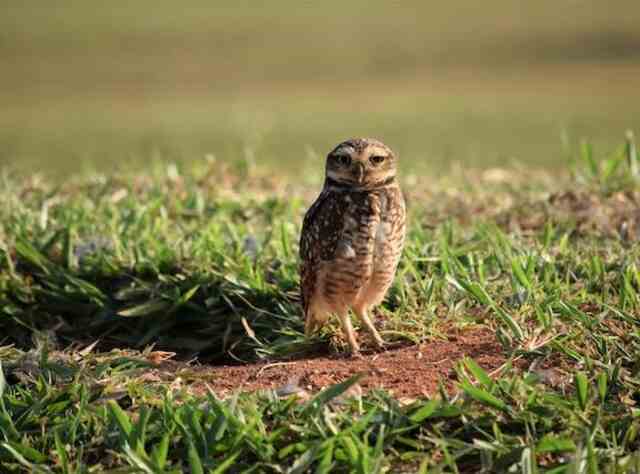
FAQs: Do Owls Eat Berries?
Do owls eat berries?
Yes, some species of owls have been known to eat berries as a small part of their diet, particularly during the winter months when other food sources may be scarce.
What kind of berries do owls eat?
Owls have been observed eating a variety of berries, including elderberries, blackberries, blueberries, and raspberries. However, the specific types of berries that owls eat may vary depending on their geographic location and the availability of food in their environment.
Do all species of owls eat berries?
No, not all species of owls eat berries. While some species may occasionally consume berries as a supplement to their regular diet, others may not eat berries at all.
Why do owls eat berries?
Owls may eat berries as a source of hydration and nutrients during times when other food sources are scarce. Additionally, some species of owls may eat berries as a supplement to their regular diet of small mammals, birds, and insects.
Can all owl species eat berries?
No, not all owl species eat berries. While some species have been observed consuming berries in their diet, others may not have the same preference.
How do owls benefit from eating berries?
Berries provide a good source of nutrition for owls, particularly during times when their preferred prey is scarce. Berries also contain antioxidants that can help boost the owl’s immune system.
Do owls only eat berries when they can’t find prey?
Not necessarily. While berries may be a substitute for prey when food is scarce, some owl species may incorporate berries into their regular diet.
Can eating too many berries be harmful to owls?
It is possible for owls to experience gastrointestinal issues if they consume too many berries. However, as long as berries are part of a balanced diet and consumed in moderation, they can be a healthy addition to an owl’s diet.

